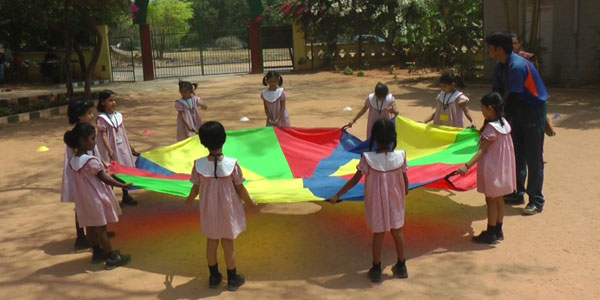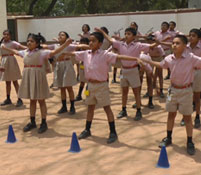
Saugat Bhattacharya is your typical parent. He worries about his children’s future almost every waking second. A media professional with his own production house, his latest concern for his two young sons is that they spend too much time with gadgets and too little on the playground. “I'm worried that they will never know the fun we had while playing nor learn the important lessons we learnt on the playground.”
According to the 7th All India School Educational Survey, less than 50% of schools have any kind of sports facilities, denying physical activity to more than 85% of children in the education system. According to estimates, less than 1% of people under the age of 35 in India have any access to organized sports and games, and less than 10% of youth have access to a playground. Another study by EduMedia, an organization that works to create media and events for children, showed that 45% kids in India play for less than two hours a week.
So why is there such a poor show of numbers when it comes to kids taking to the playground? Vineet Joshi, Chairman of the Central Board of Secondary Education (CBSE) gives perspective. “Research says that kids who play sports get better in academics as well. You also learn how to accept defeat, learn from loss and then improve, so that you are successful later on. But parents cannot see the direct impact of playing sports,” he says. Joshi also observes that the physical education was conducted in an irregular manner in many schools.
To fill this gap, the CBSE (under Joshi's leadership) has introduced a unique concept. In its letter to principals it says, “The CBSE has produced a Physical Education Teacher Training Manual and a set of Physical Education Cards for schools affiliated to CBSE. These Physical Education Cards are meant for teachers teaching at the primary level and are an effective tool for strengthening the transaction of physical education in school.”

CBSE is not the only one taking the initiative of introducing structured game periods in schools. EduSports, a Bangalore-based company, has formalized the idea of sports in the school curriculum. Its presence is seen in over 400 schools, making more than 3,00,000 children play. A survey conducted by EduSports, (with 50,000 boys and girls of ages 7–12 across 37 cities in India) found that around 51% of the students did not have the fitness and flexibility required to engage in sports and around 25% suffered from obesity.
Saumil Majmudar, CEO and Co-Founder of EduSports, has always been an avid sportsman. His love for sports translated into a business plan in 2009. “Sports is not something you do after education, it is a part of education,” says Majmudar. “I believe in the power of sports as a transformative experience and wanted to use this insight in a sustainable and scalable model.”
Principals too are reacting positively towards the initiative. “With the lifestyles of children becoming more passive and with the space constraints that exist in the cities today, children do not have an opportunity to play enough and have become prone to many health hazards,” says Latha Shivkumar, principal of Zee School, Bangalore. “To address this concern and give them an opportunity to engage in regular physical activities, we associated with EduSports. Their programme, implemented in our school this academic year, has been a huge success.”
Like EduSports, other organizations like KOOH (Kids Out Of Home) and Sports and Cricket India Academy are also involved in creating more avenues for kids to play sports. KOOH engages with kids in three ways: one, by offering sports facilities, equipment and curriculum in schools, second by offering after-school training in particular sports like cricket or football and third, by organizing an all-India sports hunt, where they actively look for sporting talent. KOOH also organizes tournaments and leagues to develop and hone talent.
Another initiative is the quirkily named One Thousand Hockey Legs that tries to take hockey to young school kids. It's a programme that was started by the Hockey Citizen Group. Its aim is to provide children with an opportunity to understand, play and enjoy hockey. The programme structure includes forming one or two teams per school, conducting friendly matches between schools, forming a team in each city, participating in state and national level competitions, holding exhibition matches, organizing an annual hockey run and mentoring talent for the national team.
Whether it is a government initiative or a private enterprise, sports is slowly but surely rising on the education agenda. But it might still take a few years to convince schools and parents about the positive consequences that sports can have in a child's life. Until then, parents like Saugat Bhattacharya are collectively pooling in money to create a turf in their building compound to make up for lack of sporting opportunities for their children.